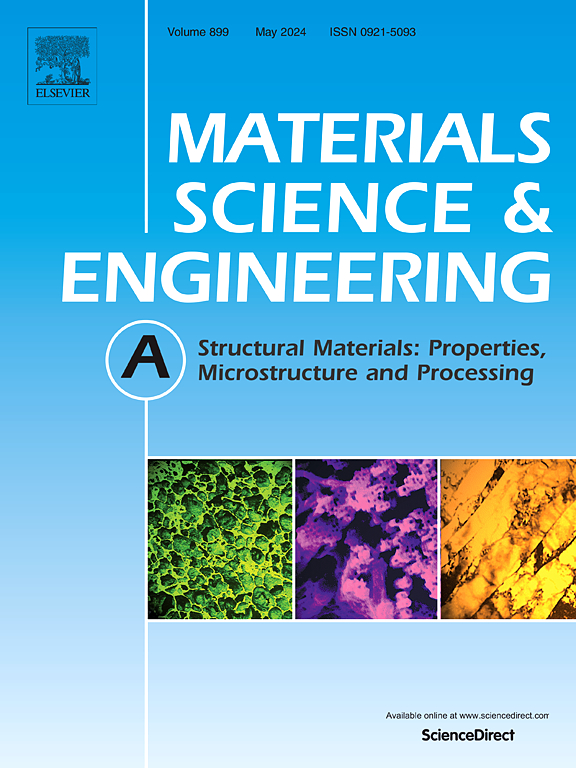Machine learning-enhanced laser cladding process for high-entropy alloy coatings with concurrent strength and ductility optimization
IF 7
2区 材料科学
Q1 MATERIALS SCIENCE, MULTIDISCIPLINARY
引用次数: 0
Abstract
This study proposes a machine learning framework integrated with laser cladding additive manufacturing to enable rapid development of high-entropy alloy (HEA) coatings with balanced strength and ductility. We demonstrate a closed-loop manufacturing methodology combining composition-driven predictive modeling with process-aware experimental validation. Six machine learning models (RF, ANN, SVM_rbf, GBM, LightGBM, XGBoost) were implemented to establish direct composition-property correlations from a curated HEA database, with LightGBM achieving superior prediction accuracy (EL: R2 = 0.938, RMSE = 4.76 %) and GBM excelling in strength modeling (YS: R2 = 0.858, RMSE = 184.82 MPa). SHAP analysis quantitatively identified Al and Nb as dominant elements governing ductility-strength trade-offs. A multi-objective genetic algorithm then generated Pareto-optimal compositions, which were manufactured through laser cladding – a high-precision additive technique. Experimental characterization revealed that process-induced microstructural evolution (grain coarsening, residual stress distribution) mediates the translation of computational predictions to actual mechanical performance. The hybrid approach demonstrates significant reductions in development cycles and costs compared to conventional trial-and-error methods, validated through Vickers hardness testing and tensile characterization. This work establishes a replicable paradigm for AI-enhanced smart manufacturing systems, where computational alloy design and laser-based processing are co-optimized to achieve target component specifications while maintaining production efficiency.
基于机器学习的高熵合金涂层激光熔覆工艺及其强度和延性优化
本研究提出了一种与激光熔覆增材制造集成的机器学习框架,以实现高熵合金(HEA)涂层的快速开发,并具有平衡的强度和延展性。我们展示了一种闭环制造方法,结合了成分驱动的预测建模和过程感知的实验验证。采用6个机器学习模型(RF、ANN、SVM_rbf、GBM、LightGBM、XGBoost)从HEA数据库中建立直接的成分-属性相关性,其中LightGBM的预测精度较高(EL: R2 = 0.938, RMSE = 4.76%), GBM在强度建模方面表现优异(YS: R2 = 0.858, RMSE = 184.82 MPa)。SHAP分析定量地确定Al和Nb是控制延展性-强度权衡的主要元素。然后用多目标遗传算法生成帕累托最优组合物,并通过激光熔覆-一种高精度加层技术制造。实验表征表明,过程诱导的微观组织演变(晶粒粗化,残余应力分布)介导了计算预测到实际力学性能的转化。与传统的试错法相比,这种混合方法显著缩短了开发周期和成本,并通过维氏硬度测试和拉伸特性进行了验证。这项工作为人工智能增强的智能制造系统建立了一个可复制的范例,其中计算合金设计和基于激光的加工协同优化,以实现目标部件规格,同时保持生产效率。
本文章由计算机程序翻译,如有差异,请以英文原文为准。
求助全文
约1分钟内获得全文
求助全文
来源期刊

Materials Science and Engineering: A
工程技术-材料科学:综合
CiteScore
11.50
自引率
15.60%
发文量
1811
审稿时长
31 days
期刊介绍:
Materials Science and Engineering A provides an international medium for the publication of theoretical and experimental studies related to the load-bearing capacity of materials as influenced by their basic properties, processing history, microstructure and operating environment. Appropriate submissions to Materials Science and Engineering A should include scientific and/or engineering factors which affect the microstructure - strength relationships of materials and report the changes to mechanical behavior.
 求助内容:
求助内容: 应助结果提醒方式:
应助结果提醒方式:


